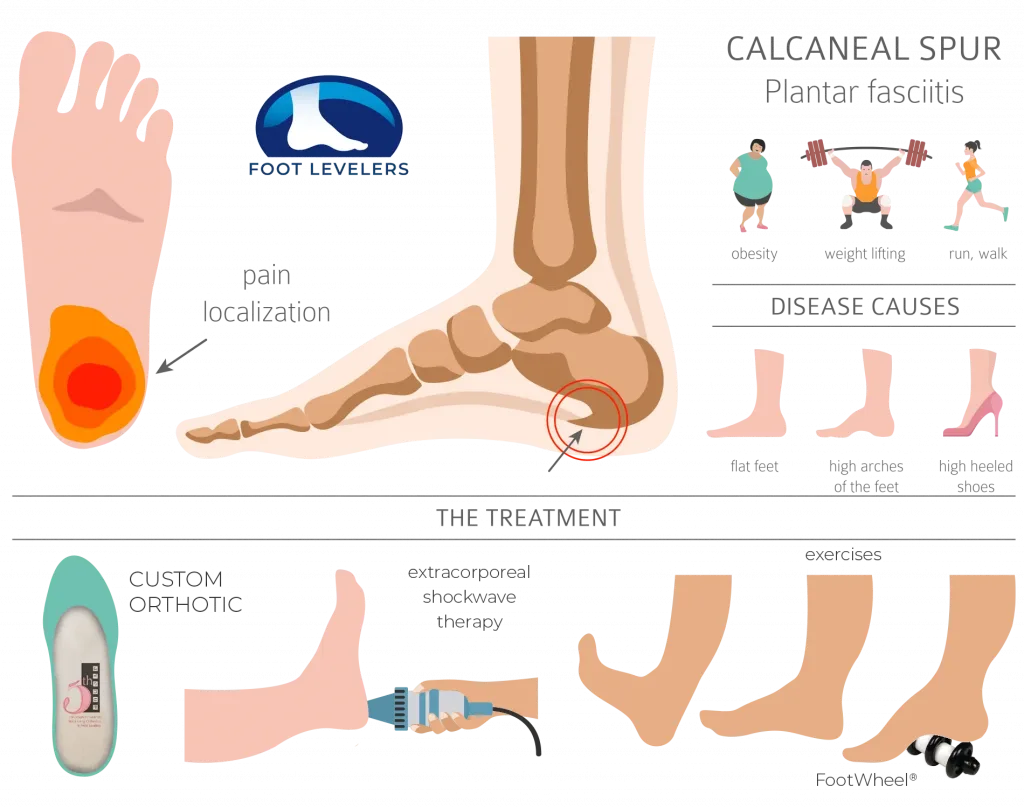For those searching for a method to enhance circulation, reduce swelling, or hasten post-workout recovery, compression socks could be a viable option.
But do you really know which pair of socks you should purchase?
Our all-inclusive guide provides everything you require to make an informed choice regarding compression stockings, including their advantages, how to select the ideal pair, and everything relevant.
DISCLAIMER!
PRIOR TO DELVING INTO COMPRESSION SOCKS, IT’S CRUCIAL TO ACKNOWLEDGE THAT THIS ARTICLE DOES NOT CONSTITUTE MEDICAL ADVICE.
Compression socks should never be used as an alternative to professional medical treatment.
If you have any apprehensions about your well-being, such as inadequate circulation or any other medical condition, it’s essential to consult your doctor before experimenting with them.
That being said, compression stockings can be a helpful aid in enhancing circulation or expediting recuperation after physical activity. Keep pursuing to acquire more knowledge.
What Are Compression Socks?
Compression socks are hosiery garments that apply gentle pressure to the legs and feet.
They are made of elastic materials that create graduated compression, which means the pressure is highest at the ankle and gradually decreases as it moves up the leg.
This design aids in promoting better blood flow, facilitating circulation back to the heart.
The stockings are also known as a better resource to exert pressure on the veins and muscles in the lower limbs, easing discomfort, fatigue, and swelling. They are commonly used by athletes for performance enhancement, prolonged standing individuals, and those needing relief from edema and varicose veins.
With a broad range of compression levels and styles available, choosing the correct pair of compression socks is essential for everyday comfort and support.
Benefits of Compression Socks
Compression stockings provide an array of advantages for individuals aiming to boost their health.
The table below says it all in a more comprehensive form:
| Some Undeniable Benefits of Compression Socks | |||
|---|---|---|---|
| Benefit | Description | Example | Best For |
| Improved Circulation | Aids blood flow, prevents clots. | Elderly, office workers. | People at risk of clots. |
| Reduced Swelling and Fatigue | Provide pressure application via normalizing blood circulation. | Travelers, healthcare workers. | Those who sit/stand for long periods. |
| Enhanced Performance | Improves blood flow, reduces vibration. | Athletes during workouts. | Sports enthusiasts. |
| Alleviates Leg Discomfort | Relieves varicose veins, spider veins, edema, DVT and lymphedema. | Those with leg issues (either sitting or standing). | People with vein issues or DVT, including pregnant women, and those with a family history of blood clots. |
| Increased Comfort | Available in various styles and materials. | Anyone seeking comfort in compression stockings. | People who want comfortable and functional socks. |
Read More: Compression Socks Benefits
What To Look For Before Choosing The Right Pair? [Buying Guide]
Compression stockings come in a variety of types and styles. Let’s examine the various options and their intended uses to assist you in making an informed decision.
Deciding On The Sock Type & Their Purposes
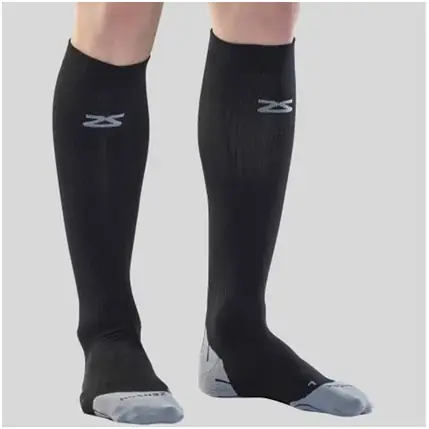
Knee-high stockings function like superheroes for your legs, supplying compression from your toes up to the knee. They’re perfect for individuals coping with swelling, varicose veins, or those who want additional leg comfort. Wear them during lengthy flights or while sitting or standing for long periods.
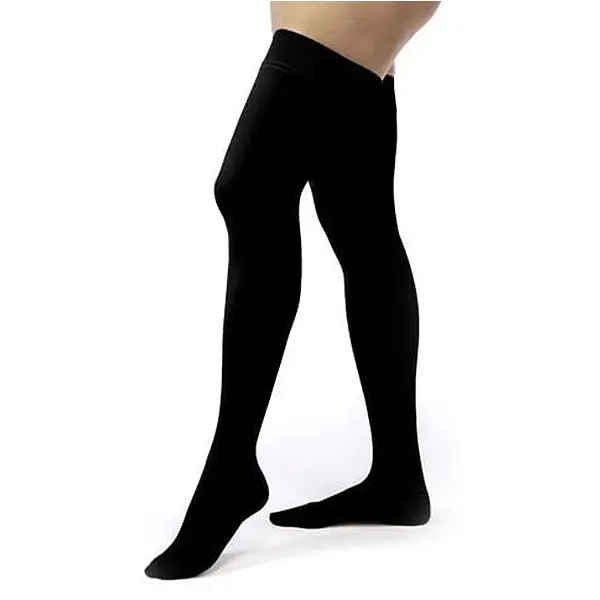
When it comes to severe leg issues, thigh-high compression stockings have got you covered your whole leg, really! These stockings extend up to your mid-thigh, making them perfect for addressing deep vein thrombosis or lymphedema. Say farewell to swelling and say hello to improved blood flow and support during post-surgery recovery.
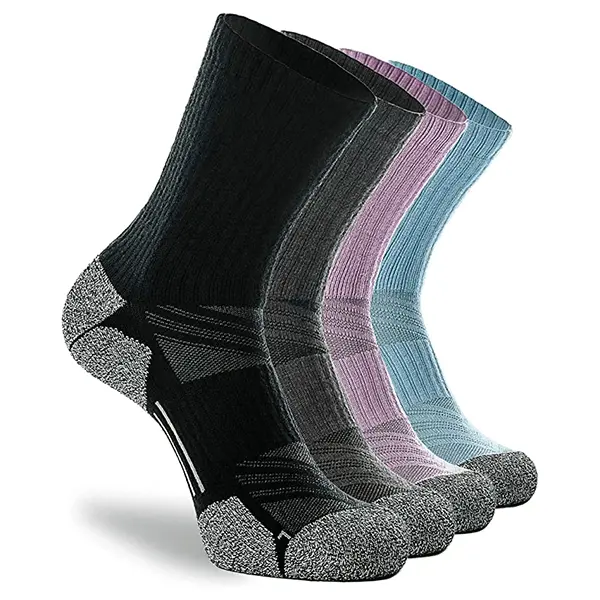
These socks are the chameleons of the bunch – versatile enough to fit into any situation. Covering your calf muscles and stopping just above your ankle, they offer moderate compression for both casual and active wear. Want light to moderate compression with everyday activities? Look no further!
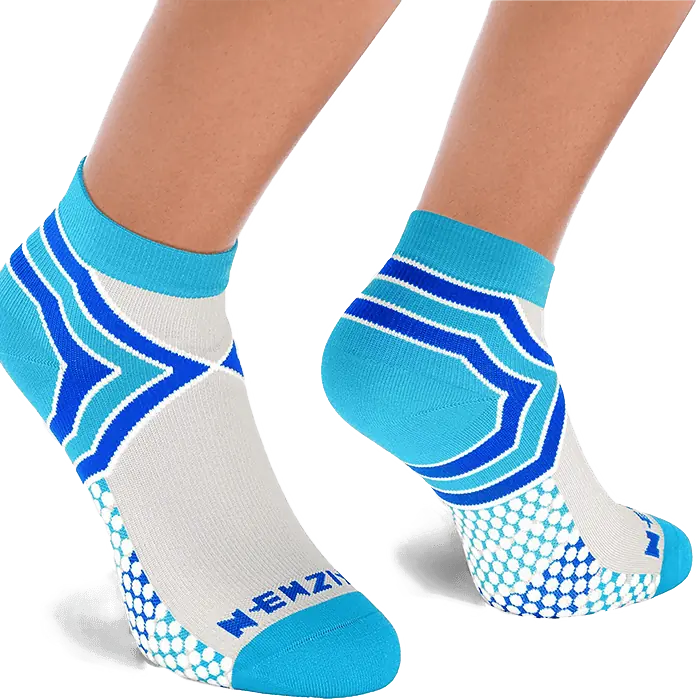
When your ankles need a little extra care, ankle socks come to the rescue. Perfect for ankle sprains, Achilles tendonitis, or unsteady ankles. They also provide targeted compression to reduce swelling, improve stability, and speed up your recovery. Walk confidently with ankle support by your side!
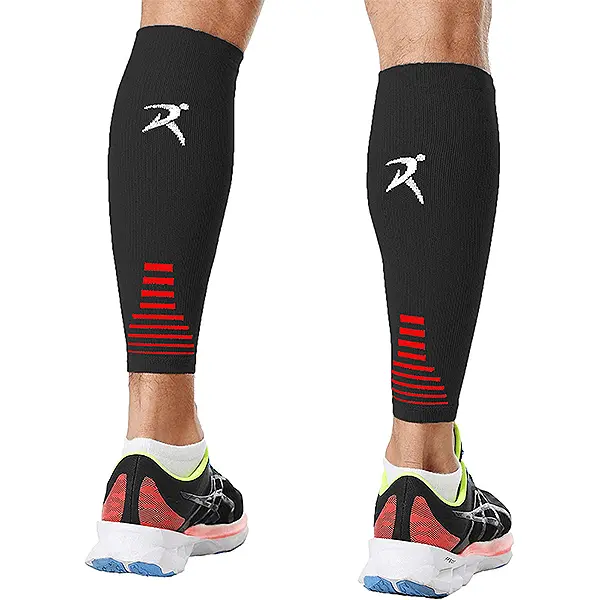
These compression sleeves mean business. Slip them on your lower legs, and they’ll work their magic on your calf muscles. Popular among athletes, compression sleeves prevent cramps and muscle strains, allowing you to stay in the game without missing a beat.
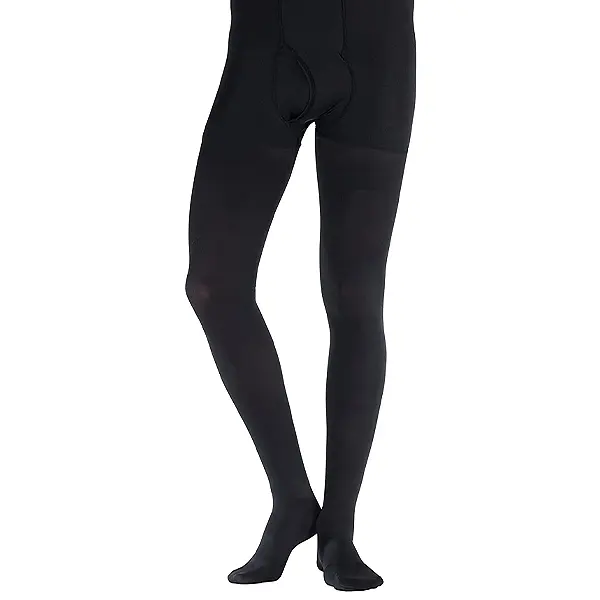
Folks, the pantyhose have got you covered from foot to thigh! These pantyhose compression garments are the real deal, especially if you’re dealing with moderate to severe venous conditions. With graduated compression that decreases pressure from the ankle to the thigh, these pantyhose improve blood circulation, fight swelling, and give your legs the love they deserve.
Read: What Are Medical Support Hose?
Steps To Choose The Right Sock Type
In this quick form, we’ll give you a brief rundown of some steps you should be familiar with before buying the socks:
So with these steps, you can hit the accelerator on your decision-making engine, and confidently cruise towards your perfect compression sock selection!
Also Read: Open Toe vs Closed Toe Compression Socks
Choosing The Materials & Their Benefits
Do you know which fabric will best support your skin type? Here’s what you need to know!
Have you heard about Nylon Compression Socks? What’s popular about them?
They’re super strong and stretchy, just like the best athletes out there! These socks are really tough and last a long time. They fit snugly on the feet and keep them dry by getting rid of any sweat quickly. They are so easy to take care of, you can wear them every day.
So, if you want comfy and durable socks that can handle anything, Nylon Compression Socks are definitely worth a try!
Spandex compression socks are comparable to the yoga masters of the sock world. They provide exceptional flexibility and stretch, conforming to your movements for a tailored fit. Hence, the socks are ideal for athletes and active individuals who require maximum support during rigorous workouts and physical activities.
Designed with breathable cotton, these socks provide excellent airflow and a gentle touch on your feet. If you’re someone who prioritizes comfort, cotton compression socks are perfect for you. They’re gentle on the feet and ideal for individuals with sensitive skin. Once you slip them on, you’ll experience all-day comfort that feels like a warm hug for your feet. Keep it cool and cozy with cotton compression socks!
These socks will make your feet feel warm and cozy, almost like they’re wrapped in a blanket. They’re made from soft and insulating merino wool, which is perfect for colder climates. And the best part? Merino wool also has great moisture-wicking properties that will keep your feet dry and odor-free. So, why not try the ultimate combination of warmth, comfort, and performance for your feet?
If you’re looking for something extra luxurious, try slipping into a pair of silk compression socks. They’ll make your feet feel like they’re getting a pampering spa treatment! So why not treat yourself to the elegance and comfort of silk compression socks? Give your feet the ultimate indulgence they deserve!
Bamboo socks have a lot of excellent qualities, including being naturally hypoallergenic, breathable, and moisture-wicking. This means they’ll help keep your feet fresh, dry, and odor-free. And with the added benefit of compression support, you’ll get both comfort and performance. Experience the softness and sustainability of bamboo by trying out a pair of these bamboo compression socks today!
Copper compression socks also help improve blood circulation and promote muscle recovery. This makes them perfect for active individuals or anyone who needs some extra support during workouts. So put on a pair of copper socks and let them work their wonders on your feet. They’ll help keep your feet fresh, comfortable, and on the move!
Steps To Choose The Right Compression Material
Here are some tips to help you out:
Sometimes, you won’t know what works for you until you try it. Don’t be afraid to experiment with different materials to find the one that suits you best.
Deciding On The Compression Levels & Their Purpose
Now get ready for compression level knowledge! This section discloses what the compression level is and how many of its types are there for different purposes.
What Is A Compression Level?
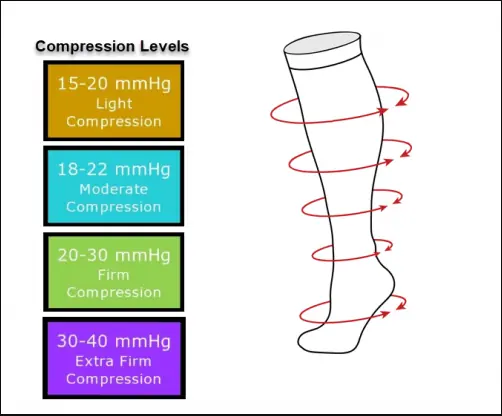
Compression level determines the pressure applied to your legs.
The unit used to measure this pressure is called millimeters of mercury (mmHg), with a higher mmHg indicating more pressure from the socks.
The health needs of individuals vary and hence require different support levels. This is why compression levels help to determine the appropriate level of support needed.
Your choice of level depends on the amount of discomfort you experience and any existing medical conditions.
Hence, choosing the correct compression level is crucial, as it guarantees optimal leg comfort and care.
Types of Compression Levels:
Remember!
Choose the compression level suitable for you and confidently move forward, assured that your legs receive the optimal pressure and care they need.
How to Choose the Right Compression Level?
Check out this table below to know what level suits you:
| Pressure Range (mmHg) | Suitable For | Benefits | Precautions |
| Mild 8-15 | Everyday Wear | Promotes healthy blood flow, prevents minor swelling, relieves tired/achy legs | Not suitable for severe venous conditions. |
| Medium 15-20 | Occasional Swelling, Mild Varicose Veins, Sedentary Lifestyle | Improves circulation, keeps legs refreshed | Not suitable for moderate to severe venous conditions or post-surgery recovery. |
| Firm 20-30 | Moderate To Severe Varicose Veins, Edema, Post-Surgery Recovery | Reduces swelling, manages symptoms of venous insufficiency, promotes efficient blood flow | Not suitable for individuals with sensitive skin or diabetes |
| Extra Firm 30-40 | Severe Venous Conditions, Deep Vein Thrombosis (DVT), Lymphedema | Manages chronic swelling, prevents blood clots, supports overall leg health | Only to be used under the guidance of a healthcare professional. |
Tip:
In case none of your conditions match with stocking usage, check out these few alternatives of compression socks that are worth buying!
Deciding On The Right Compression Size
Before making a purchase, make sure you know the right size according to your feet for a snug fitting.
Compression stockings should be measured at six points: ankle, calf, thigh, lower leg, full leg, and hip. Follow these quick guide to find the right size for you to make sure you’re getting the right size:
To sum things up, first, take off any socks or shoes. Then, use a soft tape measure to measure your leg. Don’t pull it too tight or too loose. Make sure your leg is bent at 90 degrees and your foot is flat on the floor. Finally, check the size chart from the maker to find your exact size.
For More Clarity, Read This Detailed Size Guide: How To Measure For Compression Socks
It’s important to know about different compression sock brands before buying because it helps you make an informed decision based on your specific needs.
Brands offer varying compression levels, styles, materials, and technologies that can address different leg conditions and provide support, comfort, and durability.
Researching popular compression sock brands allows you to compare features and benefits to find the best option.
Moreover, certain brands may be known for having higher quality, better customer service, or unique designs that could matter to you.
Sockwell (launched in 2011 by Goodhew, LLC) is a family-owned company that specializes in designing and producing high-quality, stylish socks made with sustainable materials for ultimate leg health and comfort.
They also offer a wide range of stylish designs for both casual and dressy options.
Comrad creates compression socks that are eco-friendly in a facility owned by a family for more than two decades.
They recycle 80% of the water they use and partner with Bluesign Systems to produce packaging. They developed 145 prototypes before launching Companions, showing their commitment to quality.
Their socks feature Antimicrobial SmartSilver technology, which extends their lifespan and reduces wash frequency.
Vim & Vigr (began in 2013) combines fashion with function by designing their compression socks with premium materials and a variety of compression levels to meet specific needs.
It also provides stylish options for everyone, whether you’re looking for a subtle pattern or a bold statement piece.
Jobst is a reliable brand in the medical socks industry with over 65 years of experience.
They provide various styles and compression levels to help people manage multiple leg conditions like varicose veins and lymphedema.
It has a diverse range of products, including medicated compression socks and other supportive garments, catering to different needs.
Figs’ have unique features that ensure optimal comfort.
Their socks include odor-fighting technology and moisture-wicking properties to keep feet fresh and dry.
However, the standout technology is their “technical comfort” feature, which guarantees a perfect fit to reduce fatigue and provide support, making them a popular choice among healthcare professionals.
Tommie Copper’s use CopperZnergy® technology to provide superior comfort and support for active individuals who spend a lot of time on their feet, reducing muscle soreness and improving recovery time.
Consider CEP if you want high-quality compression sportswear. It is a leading manufacturer of compression sportswear as well as a brand of Medi®, a company established in 1951 in Bayreuth, Germany.
Using the medical knowledge of its parent company, Medi®, CEP started producing high-tech compression stockings in 2007. Medi® is a global producer of medical compression products.
As a result, CEP has become a top player in the compression sportswear industry due to its parent company’s medical expertise and dedication to providing excellent compression products.
ProCompression’s are suitable for athletes, nurses, and those who stand for long hours, these socks offer support and improved circulation during physical activities.
Choose from 50 designs to fit your style and preference, and you can also check for new design updates on the website right away.
Ethel and Alvin’s North Carolina-based sock-pairing business has amassed 80 years of experience spanning three generations.
CrazyCompression produces compression socks with true graduated compression, including themed-style and wide calf socks, that are backed by a lifetime guarantee.
Hence, their commitment to quality has established them as a trusted source of superior socks.
Bombas is a socially conscious company that donates a pair of socks for every pair purchased.
Their socks are designed with moisture-wicking properties and seamless toes for ultimate comfort, making them a popular choice among fashion-forward individuals.
Swiftwick’s socks are specially designed to help you perform at your best with cutting-edge features.
The Contoured Compression® Fit maximizes comfort and eliminates problems like voids, bunching, or blisters.
Additionally, the Fiber First® Moisture Wicking system utilizes high-performance fibers in breathable designs to keep you dry, cool, and blister-free.
Wellow introduces a new era of comfort and functionality to the compression sock market.
Unlike conventional socks, Wellow Fit’s 18-25 mmHg compression level carefully envelops the feet, ankles, and legs to enhance blood flow without any discomfort.
This extraordinary design offers ample support for all-day wear, making Wellow Fit the preferred choice for individuals seeking top-quality socks that prioritize comfort and function alike.
Medical Use Cases of Compression Socks
By understanding how compression stockings can help with a range of health conditions and determining the appropriate compression levels for each, people can make informed decisions.
It can help them purchase socks for effective symptom management and elevate their overall well-being.
Compression Socks For Blood Circulation
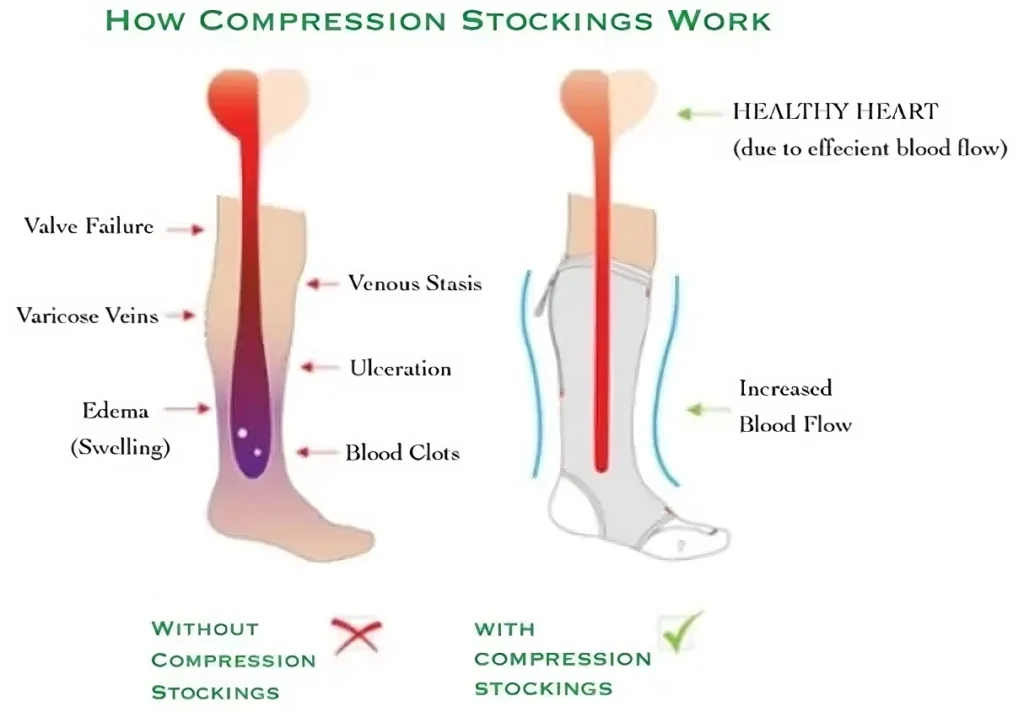
Compression stockings improve blood circulation by applying pressure to the legs. They can benefit individuals with poor circulation due to peripheral artery disease or who are at risk of blood clots.
Moderate compression levels of 15-20 mmHg are recommended for this purpose.
Compression Socks For Plantar Fasciitis
The use of compression stockings provides relief for individuals with plantar fasciitis by supporting the foot arch, reducing inflammation, and relieving pain.
Targeted compression in the foot and ankle area is recommended, usually at a medium compression level of 15-20 mmHg.
Plantar fasciitis benefits from low cut or ankle compression socks, while other conditions, like DVT, require knee-high compression stockings with higher compression levels of 20-30 mmHg. Still, we would say choosing the right size and level of compression is crucial based on individual needs and medical requirements.
Read More: How Do Compression Socks Help Plantar Fasciitis? Explained
Compression Socks For Blood Clots/DVT

The socks are used to prevent and treat deep vein thrombosis (DVT).
They promote blood flow and prevent blood pooling, thus reducing the risk of blood clots forming in the legs.
Individuals at high risk of DVT or those with a diagnosed clotting disorder are typically recommended to have higher compression levels (20-30 mmHg or higher).
Compression Socks For Swelling/Edema
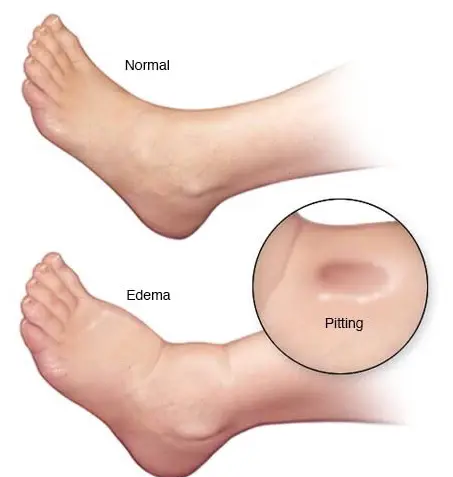
Compression socks are a suitable option for the reduction of swelling and edema in the legs and ankles.
With graduated compression, they help push out extra fluid and promote correct fluid circulation.
For managing swelling and edema, a range of mild to moderate compression levels (10-20 mmHg) is commonly suggested.
Check Out: How Do Compression Socks Help With Edema?
Also Read: Compression Socks for Swelling: How They Work?
Compression Socks For Varicose Veins
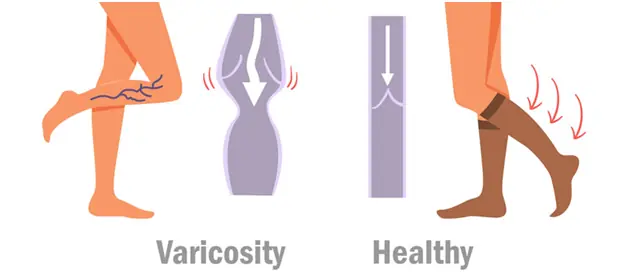
The socks are a frequent option for dealing with varicose veins. They offer vein support, jumpstarting blood flow and decreasing discomfort and swelling.
For managing varicose veins, moderate to high compression levels (20-30 mmHg or higher) might be prescribed, contingent on the seriousness of the ailment.
Read More: 7 Benefits of Compression Stockings For Varicose Veins
Compression Socks For Pregnancy
These socks are helpful during pregnancy as they can relieve leg discomfort, decrease swelling, and avert varicose veins.
During pregnancy, it is typically advised to use maternity compression socks with mild to moderate compression levels (10-20 mmHg).
Also Read: How Do Compression Socks Help With Pregnancy
Compression Socks For Neuropathy
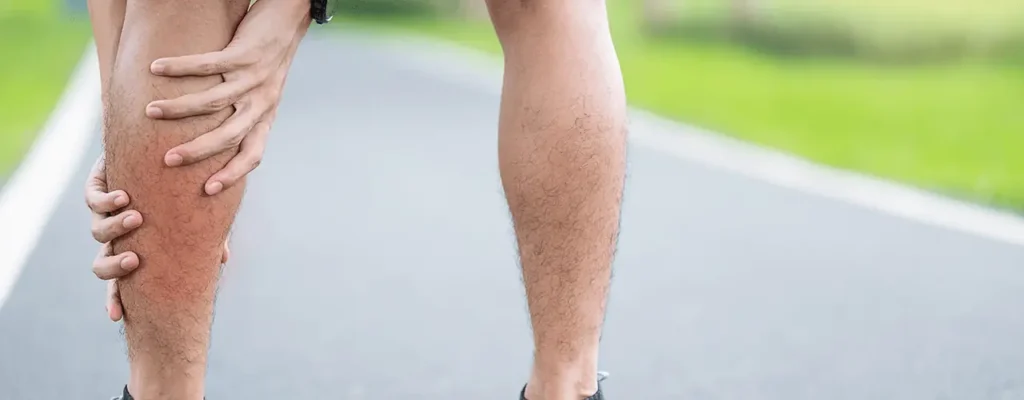
Individuals who live with neuropathy may experience numbness, tingling, or pain in their legs and feet.
With gentle to moderate compression levels (10-20 mmHg) may aid in promoting blood flow, supplying support, and reducing symptoms linked with neuropathy.
Read More: How Compression Socks Help With Neuropathy – [Explained]
Compression Socks For Gout

Compression socks can assist in the management of gout symptoms by lessening swelling and boosting circulation.
They can offer mild compression (10-15 mmHg) to alleviate discomfort and promote joint health.
Gout affects the foot, so ankle or crew-length socks are recommended for gout conditions as they offer maximum support and reduce discomfort.
Read More: How Do Compression Sock Work For Gout
Compression Socks For Sciatica
This product might ease symptoms linked with sciatica by encouraging blood circulation, diminishing swelling, and providing leg muscle support.
Managing sciatica frequently involves wearing compression socks with light or moderate compression levels (15-20 mmHg).
They also reduce swelling caused by blood pooling in the feet, which is common in conditions like sciatica that restrict movement. Therefore, for sciatica, it’s better to choose knee-high compression stockings, as they provide maximum support and targeted pressure on the affected area.
Compression Socks For Diabetes
Compression stockings are advantageous for those who have diabetes since they aid in enhancing blood circulation and lessening the possibility of foot ulcers or diabetic neuropathy.
People with diabetes are often advised to use them with mild to moderate compression levels (18-25 mmHg).
Compression Socks For Shin Splints
The socks are capable of supplying support and easing the pain associated with shin splints.
Graduated compression helps minimize inflammation and muscle vibration, thereby facilitating a quick recovery.
Typically, socks with moderate compression levels (15-20 mmHg) are preferred for managing shin splints.
Compression Socks For Achilles Tendonitis
Compression stockings with focused compression surrounding the ankle and Achilles tendon may aid in lessening inflammation and providing support to alleviate symptoms associated with Achilles tendonitis.
Managing this condition usually involves wearing the socks with medium compression levels (15-20 mmHg).
Compression Socks For Venous Insufficiency
They are a conventional remedy for venous insufficiency, which is a situation where the veins have trouble returning blood to the heart.
Greater compression levels (20-30 mmHg or higher) are regularly suggested to supply sufficient support and improve blood flow, lessening symptoms such as leg fatigue, pain, and swelling.
Compression Socks For Arthritis
The socks are capable of providing relief to those who have arthritis by producing gentle compression that diminishes joint inflammation and swelling.
They can also reduce pain and provide support for painful joints.
It is generally suggested that compression stockings with mild to moderate compression levels (20-30 mmHg) be used for treating arthritis-related symptoms.
Compression Socks For Restless Legs/RLS
Compression socks provide assistance to individuals with Restless Legs Syndrome (RLS) by increasing blood circulation, minimizing discomfort, and producing a soothing effect on the legs.
For the management of RLS symptoms, socks with mild to moderate compression levels (10-20 mmHg) are typically advised.
Compression Socks For Bunions
Bunion is a foot condition with a bony bump at the base of the big toe, causing discomfort, pain, swelling, and difficulty wearing regular shoes.
In their various types, socks with a wide toe box and mild compression can provide relief to those who have bunions. These socks can reduce swelling, alleviate pain, and provide support to the affected area.
Typically, socks with mild compression levels ranging from 10 – 15 mmHg are advised for managing bunions.
Compression Socks For Postural Tachycardia Syndrome (PoTS)
Individuals with Postural Tachycardia Syndrome (PoTS), a condition marked by an atypical increase in heart rate when standing, can find compression socks useful.
These stockings aid in enhancing blood circulation, warding off blood pooling in legs, and reducing dizziness and lightheadedness attributable to the syndrome.
They are typically recommended at moderate to high compression levels (20-30 mmHg or higher) to manage PoTS-related symptoms.
Some General Use Cases of Compression Socks
Compression socks are a common choice for older people with leg-related problems.
They aid older adults facing poor circulation and leg swelling due to prolonged sitting or standing. By applying pressure to the legs, enhancing blood flow, reducing discomfort, and reducing fatigue, the socks also prevent blood clots, which pose a significant risk to sedentary seniors.
Apart from improving physical health, these socks provide comfort and security.
Elderly people who have difficulty standing or walking may feel more supported when wearing them.
Overall, compression socks are an excellent option for elderly individuals looking to improve their leg health and overall quality of life.
They are easy to wear and are available in different styles and colors, so finding a comfortable and fashionable pair shouldn’t be too challenging.
Compression Socks For Long Flights/Sittings/Travel
Have you ever felt uncomfortable or had swollen legs after a long flight or road trip?
Compression stockings can be your hero!
They’re easy to wear, available in various colors and styles to match your outfit, and most importantly, they’ll leave you feeling refreshed and revitalized on arrival.
Traveling should be energizing and enjoyable, not exhausting and agonizing. So, why not add them to your packing list? Your legs will thank you for it!
Compression Socks For Standing All Day
Nurses, teachers, chefs, and retail workers are professions that require individuals to stand or walk for long periods of time. While these jobs may be fulfilling, they can also have negative impacts on the body, especially the legs.
It’s common for people in these professions to experience leg pain and discomfort because of prolonged periods of standing or walking. These socks offer a simple solution to this problem.
They exert pressure on the legs to push blood up towards the heart rather than allowing it to pool in the lower legs and feet. This increased blood circulation can help reduce pain, discomfort, and prevent severe conditions like deep vein thrombosis (DVT).
Here is everything you need to know about how they can benefit various professions.
Compression Socks For Nurses
Nurses are on their feet for long hours and must always be ready to help patients. Compression stockings can ease the workload by increasing comfort throughout the day. Muscle tissue can destabilize from continuous standing, resulting in varicose veins.
Graduated compression from the socks can help prevent these conditions and offer relief from discomfort, sore feet, blisters, and stress.
When choosing the socks for nursing, go for a pair with moderate compression (15-20 mmHg) and breathable materials like bamboo or cotton.
Check Out: 12 Best Nursing Compression Socks
Also Read: Why Do Nurses Wear Compression Stockings [Detailed Explanation]
Compression Socks For Teachers
Teachers wear compression stockings to reduce swelling in their legs, ankles, and feet resulting from prolonged standing.
They prevent spider veins, reduce fatigue and pain, and increase energy. Also, they offer comfort while standing or sitting, decreasing soreness and inflammation from injuries. Teachers can feel their best during and after work hours by wearing them.
Consider mild to moderate compression (10-20 mmHg) and nylon/spandex blends for ultimate comfort and support.
Compression Socks For Chefs & Restaurant Workers
Chefs and cooks work in hot kitchens for prolonged periods, requiring compression socks made of moisture-wicking fabrics that prevent sweat and keep their feet cool.
Socks with microfiber, cotton, or merino wool are the best options, while cotton or silver prevent foot odor.
When selecting the socks for chefs and restaurant workers, prioritize moderate compression (15-20 mmHg) and durable materials like nylon and spandex.
Compression Socks For Retail Workers
Retail workers are always on their feet, aiding customers in the store.
These socks can provide the support they need to stay comfortable and productive throughout their shift while reducing the risk of developing circulatory issues.
Consider mild to moderate compression (10-20 mmHg) and moisture-wicking materials like bamboo or cotton for maximum comfort.
Hence, compression socks offer significant relief for various professions that require prolonged periods of standing or sitting.
We Recommend:
Choose the socks with the right level of compression and material that best suits your needs. Gradually increasing the pressure of the socks as your body adjusts is also recommended.
Compression Socks For Summer Weather
Summer is the time to enjoy the sun, but compression socks can make it challenging.
Don’t let the hot weather stop you from living life to its fullest!
Here’s how they can aid in keeping you cool and comfortable during the summer:
With the right socks, you can withstand the heat and revel in your summer. Whether you’re on the go or taking it easy by the pool, they can help you stay composed and comfortable.
For Sport/Outdoor Activities
Compression Socks For Hiking
Hiking enthusiasts, rejoice! Compression socks can enhance your experience on the trails. They support your calves, ankles, and arches, reducing fatigue and minimizing the risk of injury. Opt for the socks with moisture-wicking properties to keep your feet dry and blister-free during those lengthy hikes.
Check Out: 7 Best Hiking Compression Socks
Compression Socks For Running/Athletics
Put on your running shoes and hit the pavement with confidence! Socks for running can boost your performance and aid in post-workout recovery. They increase blood flow, lower muscle vibration, and provide targeted support to key areas, allowing you to go the extra mile while reducing the risk of muscle soreness.
Check Out: 10 Best Compression Socks For Men
Compression Socks For Cyclists
Whether you’re a recreational cyclist or a devoted enthusiast, compression stockings can improve your cycling experience. By promoting better blood circulation, they oxygenate your muscles and prevent fatigue. Choose the socks with a snug fit and moisture-wicking properties to keep your feet comfortable and dry during your cycling adventures.
No matter what outdoor activity you enjoy, wearing them can offer valuable benefits.
They provide support, assist in muscle recovery, and keep your feet in top condition, enabling you to savor your favorite sports and outdoor adventures to the fullest.
How To Wear and Care For Compression Socks
Wearing and caring for your socks properly is key to maximizing their effectiveness. If you know how to put them on and take care of them regularly, you can reap its full benefits for leg health and overall comfort.
Below, we have briefly explained how to wear them and properly wash them to extend their lifespan.
How To Put On Them
It’s crucial to wear and maintain them correctly for optimal results. Follow these steps for proper sock application:
Read More: How To Wear Compression Socks
Tip!
When putting on your socks, make sure your skin is dry to avoid slipping. Applying some talcum powder or cornstarch to your feet can help absorb moisture and make it easier to slide the socks on.
How To Wash Them
To care for your socks correctly, follow these steps:
Tip!
Consider purchasing multiple pair of socks so that you can rotate them between uses. This will allow each pair to last longer and maintain its compression level.
Read More: How To Wash Compression Socks
To Sum Things Up!
So, there you have it! Having a deeper understanding about each and every aspect is crucial to make the best purchase.
Also, knowing to wear and care for your socks appropriately will help you gain maximum benefits. Follow the step-by-step guidelines to achieve a proper fit and maintain their quality.
When purchasing, consider factors like sock type, material, compression level, and reputable brands tailored to your needs.
We hope that this comprehensive buying will make your purchase decision much easier. Take charge of your leg health today and embrace the advantages of compression socks!


